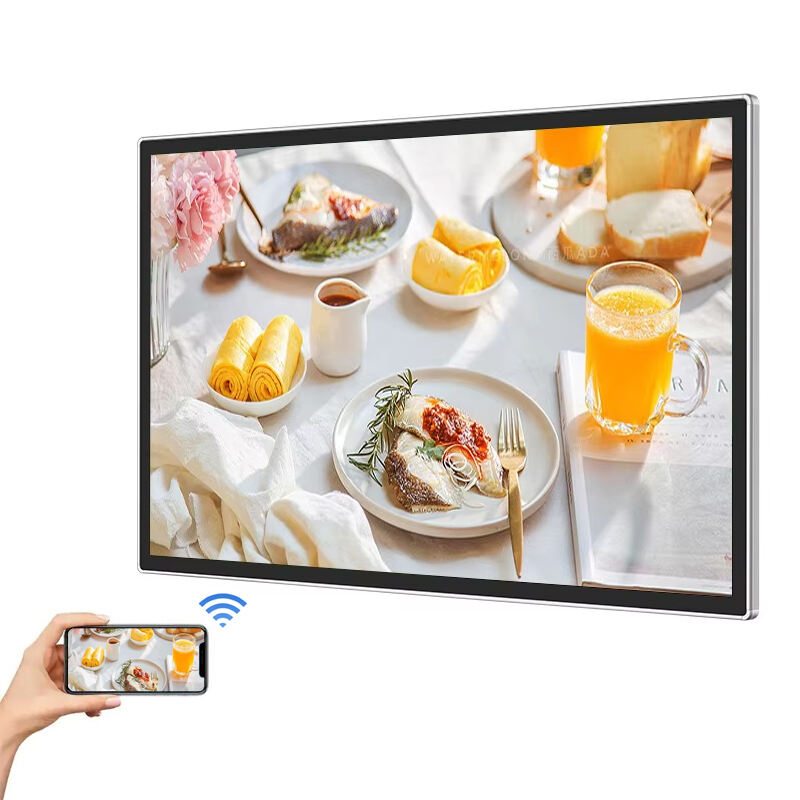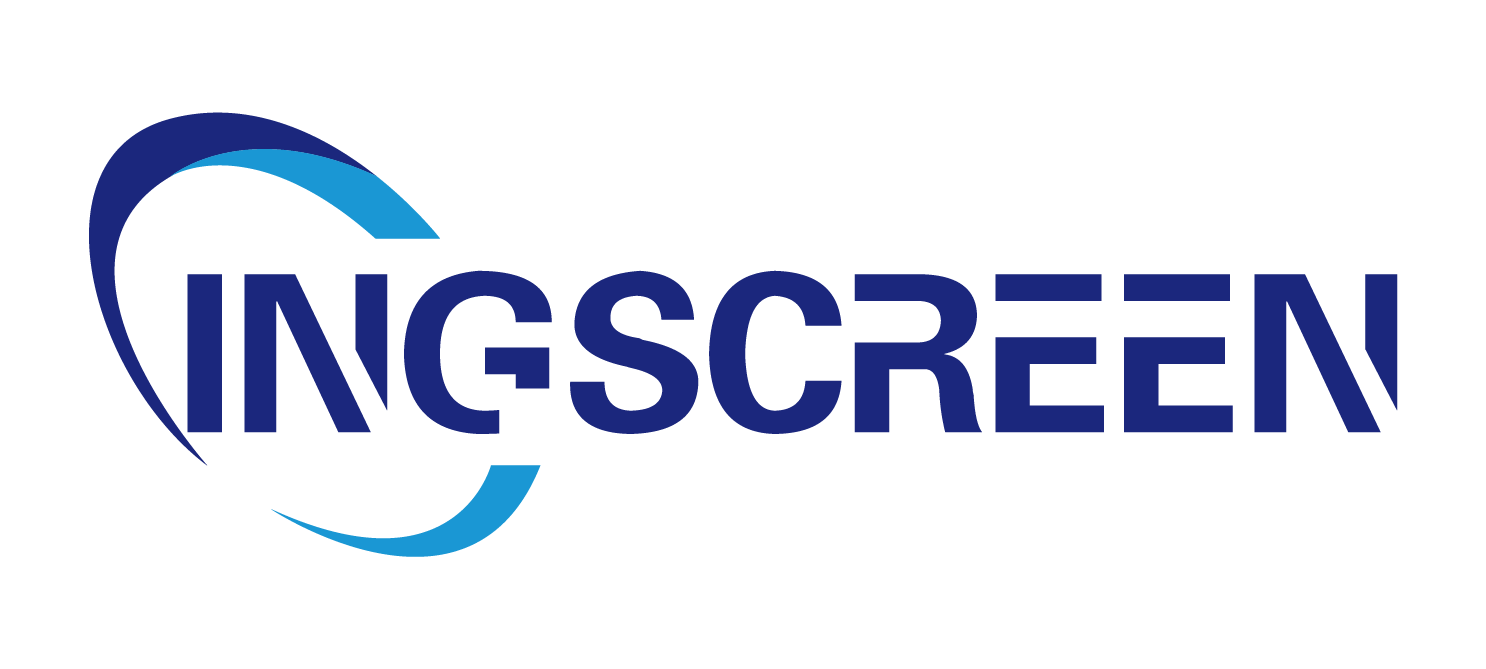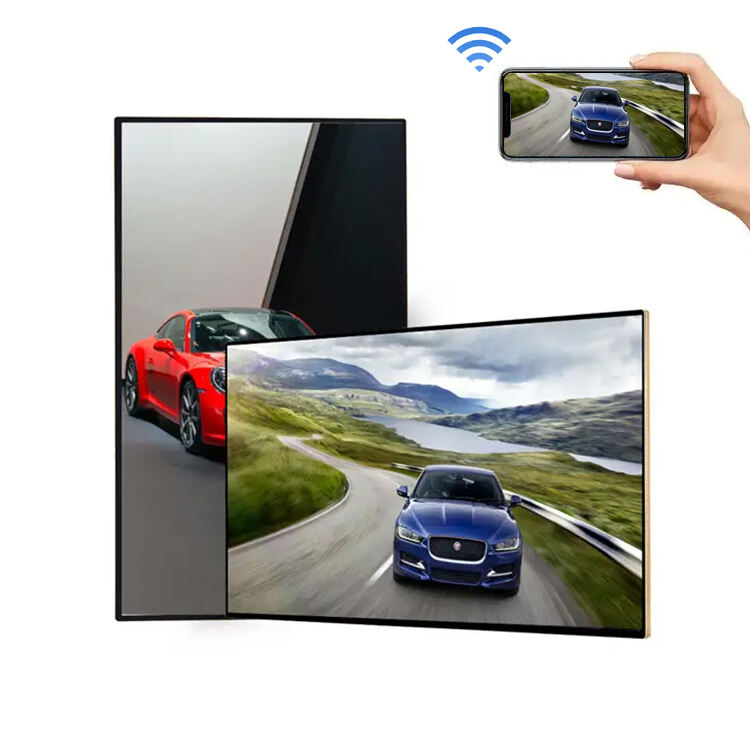What Should You Look for When Choosing Digital Signage Displays?
Digital signage displays have become a powerful tool for businesses, from retail stores showing promotions to hospitals sharing wayfinding info. But with so many options—sizes, resolutions, and features—it’s easy to feel overwhelmed. The right digital signage display depends on your goals, space, and audience. Whether you need to attract customers, share information, or streamline operations, knowing what to look for ensures you pick a display that works hard for your business. Let’s break down the key factors to consider.
1. Start with Your Purpose
The first step in choosing digital signage displays is to clarify their role. What do you want them to do? This shapes every other decision:
- Retail or advertising: If you’re showcasing products, sales, or ads, prioritize bright, high-resolution displays that grab attention. Screens near store entrances need to be eye-catching, while those in aisles should highlight specific items (e.g., a display next to snacks showing a “buy one, get one” deal).
- Information sharing: For hospitals, airports, or offices, digital signage displays need to be clear and easy to read. They might show maps, schedules, or safety messages—so readability from a distance is key.
- Wayfinding: In large spaces like malls or universities, displays need to guide people with interactive maps. Touchscreen capability and simple navigation are must-haves here.
- Employee communication: Break room or office displays sharing company updates can be smaller, with basic features—focus on reliability over flashy specs.
For example, a coffee shop’s digital signage display near the counter should show a menu with vivid images and prices, while a hospital’s display in a lobby needs clear, large text for directions to departments.
2. Size and Placement
Digital signage displays come in sizes from small (10 inches) to large (100+ inches). The right size depends on where you’ll put it and how far people will stand when viewing:
- Viewing distance: A general rule: for every 3 feet of distance, add 10 inches to the screen size. A display in a small retail aisle (viewed from 3–6 feet) works with a 15–24 inch screen. A display in a large airport lobby (viewed from 10–20 feet) needs 40–65 inches to be readable.
- Space constraints: Measure your intended spot. A narrow hallway might fit a 24-inch vertical display, while a wide wall in a mall can handle a 65-inch horizontal screen. Avoid oversized displays that overwhelm the space or block foot traffic.
- Orientation: Choose between landscape (wide, like a TV) or portrait (tall) orientation. Landscape works for ads or videos, while portrait is better for menus, lists, or wayfinding (e.g., a vertical display showing a list of store departments).
3. Resolution and Image Quality
A digital signage display’s resolution (pixels per inch) determines how sharp images and text look. Higher resolution means clearer content, which is critical for readability:
- HD (1920x1080): Good for most uses, like retail ads or office updates. It’s affordable and works well for screens up to 55 inches. Text and images look sharp from 10–15 feet away.
- 4K (3840x2160): Better for large screens (65+ inches) or close viewing. 4K makes fine details (like small text on a map or product textures in ads) look crisp. It’s worth the extra cost for high-traffic areas where clarity matters.
- Avoid low resolution (720p or lower): These can make text blurry, especially on larger screens. They’re only suitable for very small displays (10–15 inches) showing simple content (e.g., a “closed” sign).
For example, a 4K digital signage display in a luxury store showcasing high-end watches will make the product details pop, while an HD display in a fast-food restaurant showing a burger ad works just fine.
4. Brightness and Readability
Digital signage displays need to be visible in their environment, whether it’s a dimly lit office or a sunlit storefront:
-
Brightness (measured in nits):
- Indoor displays: 300–500 nits work for dim or moderately lit spaces (offices, lobbies).
- Well-lit indoor areas (stores with large windows): 500–1000 nits to combat glare from sunlight.
- Outdoor displays: 2000+ nits to stay visible in direct sunlight. Some even auto-adjust brightness based on ambient light (saving energy).
- Anti-glare features: Screens with matte finishes or anti-reflective coatings reduce glare, making them easier to read in bright conditions. This is a must for displays near windows or outdoors.
- Viewing angles: People shouldn’t have to stand directly in front to see the screen. Look for displays with wide viewing angles (170°+ horizontal and vertical), so content is clear from the side—important in busy areas like mall corridors.

5. Durability and Build Quality
Digital signage displays often run 12–24 hours a day, so they need to be tough. Durability depends on where and how you use them:
- Indoor use: Most standard displays work, but in high-traffic areas (like retail stores with kids or busy lobbies), choose displays with scratch-resistant screens and sturdy frames. Avoid fragile glass that can crack from bumps.
- Outdoor use: Look for weatherproof displays rated for rain, snow, and extreme temperatures (-40°F to 122°F). They should have sealed casings to keep out dust and moisture, and built-in heaters/coolers to prevent overheating or freezing.
- 24/7 operation: Displays meant to run all day (like airport info screens) need “commercial-grade” components. These have better cooling systems to handle constant use, unlike consumer TVs (which can overheat if left on 24/7).
A restaurant’s outdoor digital signage display, for example, needs to withstand rain and humidity, while a display in a warehouse should resist dust and accidental bumps from carts.
6. Connectivity and Content Management
Digital signage displays need to update content easily—whether it’s a new sale, a changed schedule, or a fresh ad. Good connectivity ensures this process is smooth:
- Wired or wireless: Wi-Fi is convenient for remote updates (e.g., changing a promotion from your office), but wired connections (Ethernet) are more reliable for critical displays (like airport flight info). Many displays offer both options.
- USB/SD card slots: Useful for quick updates (e.g., plugging in a USB drive with a new ad). This is handy for small businesses without advanced tech setups.
- Content management software (CMS): Most digital signage displays work with CMS tools that let you schedule, edit, and push content to one or multiple screens. Look for user-friendly software—you don’t need to be a tech expert to use it. Features like scheduling (e.g., “show breakfast menu 7–11 AM”) save time.
- Cloud-based vs. on-premise: Cloud CMS lets you manage displays from anywhere with an internet connection, which is great for businesses with multiple locations (e.g., a chain of stores). On-premise CMS works better for single displays or secure environments (like hospitals with strict data rules).
7. Touchscreen Capability (If Needed)
Not all digital signage displays need touchscreens, but they’re essential for interactive uses:
- When to choose touchscreens: Wayfinding (letting users search for a store), self-service kiosks (ordering food), or employee training (interactive quizzes). They engage users more than passive displays.
- Types of touchscreens: Infrared (works with any object, like gloves) is good for outdoor or industrial use. Capacitive (like smartphone screens) is more responsive but doesn’t work with gloves—better for indoor, warm environments.
- Cost: Touchscreens are pricier than non-touch displays, so only get them if interactivity is necessary. A retail store’s product catalog display might benefit from touch (letting customers browse details), but a static ad display doesn’t need it.
8. Cost and Long-Term Value
Digital signage displays range from $200 (small indoor) to $10,000+ (large outdoor, commercial-grade). While budget matters, focus on long-term value:
- Initial cost vs. maintenance: A cheap display might save money upfront but need frequent repairs (e.g., replacing a broken screen), costing more over time. Commercial-grade displays cost more but last 5–7 years (vs. 2–3 years for consumer TVs).
- Energy efficiency: Look for displays with ENERGY STAR ratings—they use less electricity, cutting utility bills, especially for 24/7 operation.
- Warranty: A good warranty (3–5 years) covers parts and labor, reducing repair costs. Avoid displays with only 1-year warranties, as they often have lower-quality components.
FAQ
What’s the difference between commercial and consumer digital signage displays?
Commercial displays are built for 24/7 use, have better durability, and work with CMS software. Consumer TVs (used as displays) can overheat, lack commercial features, and fail quickly with constant use.
Do I need 4K resolution for digital signage displays?
For screens larger than 55 inches or close viewing (3–6 feet), 4K is worth it for sharpness. Smaller screens (under 43 inches) look fine with HD (1080p).
How often should I update content on digital signage displays?
For retail, update promotions weekly or monthly. For info screens (like hospital wayfinding), update when details change (e.g., a new department opens). Use scheduling tools to automate updates.
Can digital signage displays work without internet?
Yes. You can update content via USB/SD cards, or use them to show pre-loaded content (like a loop of ads). Internet is only needed for remote or frequent updates.
Are outdoor digital signage displays more expensive?
Yes, due to weatherproofing and durability features. They cost 2–3 times more than indoor displays of the same size, but they’re necessary for outdoor use.
Do touchscreen digital signage displays get dirty easily?
They can, but models with anti-fingerprint coatings are easier to clean. In high-use areas, plan to wipe screens daily with a soft cloth.
How do I install digital signage displays?
Small displays can be mounted with brackets (DIY-friendly). Large or outdoor displays often need professional installation to ensure safety and proper weatherproofing.
Table of Contents
- What Should You Look for When Choosing Digital Signage Displays?
- 1. Start with Your Purpose
- 2. Size and Placement
- 3. Resolution and Image Quality
- 4. Brightness and Readability
- 5. Durability and Build Quality
- 6. Connectivity and Content Management
- 7. Touchscreen Capability (If Needed)
- 8. Cost and Long-Term Value
-
FAQ
- What’s the difference between commercial and consumer digital signage displays?
- Do I need 4K resolution for digital signage displays?
- How often should I update content on digital signage displays?
- Can digital signage displays work without internet?
- Are outdoor digital signage displays more expensive?
- Do touchscreen digital signage displays get dirty easily?
- How do I install digital signage displays?




